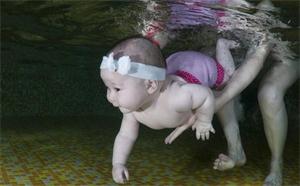Medical and health services in China
(China Daily) Updated: 2012-12-27 07:11I.
Basic Conditions
People's health has been improved. Judging from important indicators that give expression to national health, the health of the Chinese people is now among the top in developing countries. In 2010, the life expectancy was 74.8 years - 72.4 years for males and 77.4 years for females; the maternal mortality rate went down from 51.3 per 100,000 in 2002 to 26.1 per 100,000 in 2011; the infant mortality rate and the mortality rate of children under the age of five have kept dropping, with the former going down from 29.2 per thousand in 2002 to 12.1 per thousand in 2011, and the latter, from 34.9 per thousand to 15.6 per thousand, attaining ahead of schedule the UN Millennium Development Goal in this regard.
Medical and healthcare systems covering both urban and rural residents have been put in place. Of these systems, the first is the public health service system, which covers disease prevention and control, health education, maternity and child care, mental health, health emergency response, blood collection and supply, health supervision, family planning and some other specialized public health services, and a medical and healthcare system based on community-level healthcare networks that provides public health services. The second is the medical care system. In the rural areas, it refers to a three-level medical service network that comprises the county hospital, the township hospitals and village clinics, with the county hospital performing the leading role, and township hospitals and village clinics service at the base. And in the cities and towns, it refers to a new type of urban medical health service system that features division of responsibilities as well as cooperation among various types of hospitals at all levels and community healthcare centers. The third is the medical security system. This system comprises mainly the basic medical security, supported by many forms of supplementary medical insurance and commercial health insurance. The basic medical security system covers basic medical insurance for working urban residents, basic medical insurance for non-working urban residents, a new type of rural cooperative medical care and urban-rural medical aid, which cover, respectively, the employed urban population, unemployed urban population, rural population and people suffering from economic difficulties. And the fourth is the pharmaceutical supply system, which covers the production, circulation, price control, procurement, dispatch and use of pharmaceuticals. The recent work is focused on establishing a national system for basic drugs.
The health financing structure has been constantly improved. China's health expenditure comes from the government's general tax revenue, social medical insurance, commercial health insurance, residents' out-of-pocket spending, etc. In 2011, the total health expenditure in China reached 2,434.591 billion yuan, 1,806.95 yuan per capita. The total expenditure accounted for 5.1% of the country's GDP. In comparable prices, the health expenditure grew by an average annual rate of 11.32% from 1978 to 2011. Individual "out-of-pocket" spending declined from 57.7% in 2002 to 34.8% in 2011, showing that health financing is working better in the areas of risk protection and re-distribution. In 2011, the spending on hospitals and outpatient establishments was 1,808.94 billion yuan, and that on public health agencies, 204.067 billion yuan, comprising 71.74% and 8.09%, respectively, of the total health expenditure. Of the total spending on hospitals, those on urban hospitals, county hospitals, community health service centers and township health service centers stood at 64.13%, 21.28%, 5.17% and 9.3%, respectively.
Health resources have been developing in a sustained way. By the end of 2011, medical and healthcare institutions around the country totaled 954,000, an increase of 148,000 over 2003. Licensed doctors (assistants) reached 2,466,000, or 1.8 per thousand people, as compared with 1.5 per thousand people in 2002. Registered nurses totaled 2,244,000, or 1.7 per thousand people, as compared with one per thousand people in 2002. The number of hospital beds reached 5160,000, or 3.8 per thousand people, as compared with 2.5 per thou-sand people in 2002.
Marked improvement has been seen in the utilization of medical and health services. In 2011, medical institutions throughout the country hosted 6.27 billion outpatients, as compared with 2.15 billion in 2002; and admitted 150 million inpatients, as compared with 59.91 million in 2002. That year, Chinese residents went to the medical institutions for medical treatment 4.6 times on average; 11.3 of every 100 people were hospitalized; the utilization rate of hospital beds reached 88.5%; and the hospital stay of the inpatients averaged 10.3 days. These figures show that it has become increasingly convenient to see a doctor and more easily accessible to get medical services. In 2011, 83.3% of all households (80.8% in rural areas) could reach medical institutions within 15 minutes, as compared with 80.7% in 2002. Medical service quality management and control systems have been constantly improved. A system of blood donation without compensation has been established, so as to ensure blood supply and safety.

In our daily life, more and more loanwords appear and change our habits in Chinese expression. Loanwords sound very similar with their original English words, and the process of learning them is full of fun to foreign students.

It has been a while since I've contributed to this Forum and I figured that since now I am officially on summer holiday and another school year is behind me I would share a post with you.










